Our trip to Mt. Kilimanjaro was not originally planned for 1/1/2000, but that's the way it worked out. Still, an interesting way to spend the New Year. Our journey to Africa consisted of a week of sightseeing in a couple of nature preserves, and a 6-day trek up the mountain, to the "Roof of Africa". I hope the following photos give some idea of our experience. |
| Most of these photos were taken in either the Ngorongoro crater or around the Tarangire preserve. During these "photo safaris" we were riding in Toyota Land Cruisers, with openings in the roof. This way we could see and take pictures without having to worry about being trampled by an irate Cape Buffalo. |
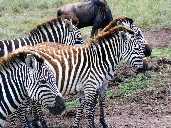
|
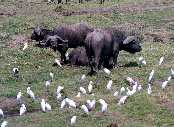
Cape Buffalo, the only animal they kept warning us about. They tend to be very ornery, especially if surprised |
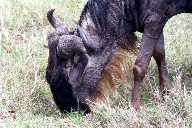
wildebeest (ugly things) |
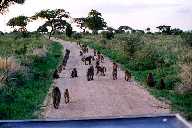
Baboons |

|
More Animal
|
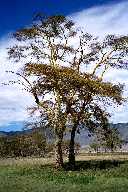
An acacia tree, a giraffe's favorite snack |
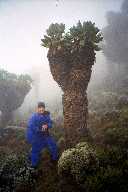
some alien-looking plants called giant groundsels. Seems like something fake you'd see in a Tarzan movie |
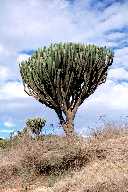
The appropriately named candleabra tree |
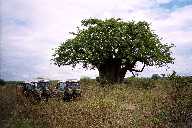
a large baobab tree we had lunch at one day. |
More Plant
|
Masai
|

| This was an old volcanic crater which has become a naturally isolated environment for all sorts of animal life. The first Europeans didn't see it until late in the 1800's, just because they didn't think to look up in what appeared to be a simple mountain range. Many of the animal photos above were taken here. Our camp was up on the rim of the crater. |
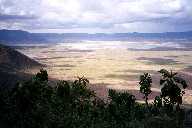
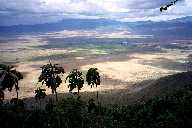
View from the rim |
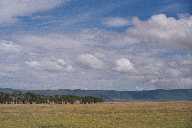
On the floor of the crater, looking up toward the rim |
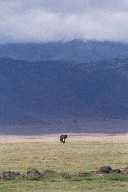
We really didn't see any elephant herds, just single males, out on their own |
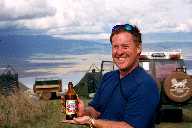
One of our favorite refreshments, a local brew |
More Ngorongoro |
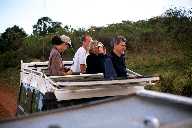
|
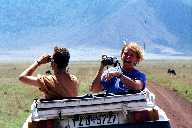
|
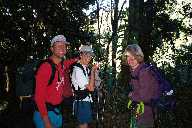
|
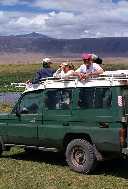
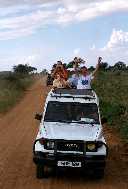
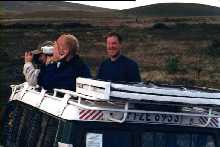
Riding in our "European wildebeests" (actually Japanese wildebeests... they were Toyota Landcruisers) |
More of
|
The Hike up KilimanjaroIf you're really interested, you can view this map of the route we took up the mountain to Uhuru peak. It's 353K, though, so it may take a little while to load. I gleefully stole this map from Dave and Caroline Squire's web site (thanks, guys!). |
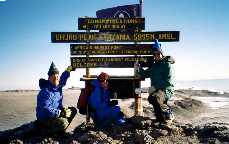
At the summit! 19,340 feet, and by this time I had a bad case of bronchitis (like the air wasn't thin enough...) |
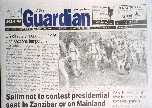
I had to go all the way to Tanzania to get my picture on the front page of a newspaper. They were actually making quite a big deal out of all the hikers making the trek up to Kilimanjaro summit for 1/1/2000. There were probably 4 times as many people as normal. I'm in the dark shirt and shorts toward the right.Article Text |
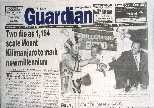
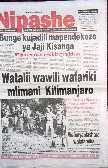
This paper and the one next to it (in Swahili) came out after 1/1/2000, reporting that two clients died during the climb... one Swiss guy of a heart attack and an American woman of altitude sickness (high altitude cerebral edema, HACE). As it turns out, two porters also died of HACE, but I guess that wasn't newsworthy. Naturally, the one on the right again shows a photo of our group, merrily waving under the unfortunate headline. Article Text |
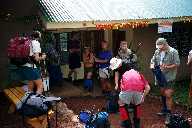
|
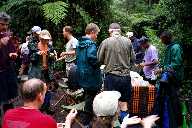
|
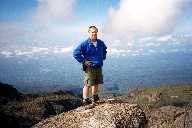
About 3/4 of the way up, way above the clouds. |
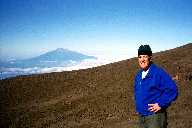
That's Mt. Maru in the background... I think the altitude's getting to me... |
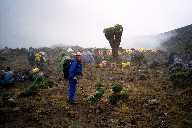
|
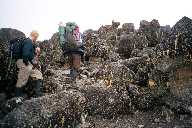
|
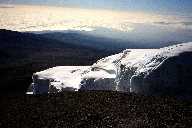
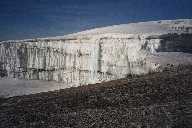
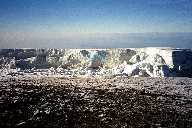
Ice fields at the summit. |
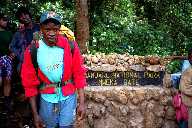
One of our assistant guides, Bonaventure. This is at the end of the trail, after coming down the Mweka route. |
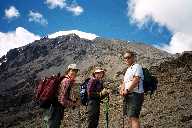
|
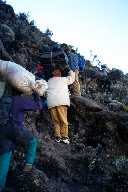
I wouldn't want to be a porter... but it's not a bad deal if you're a native Tanzanian. A starting porter makes about $10 a day. If he makes two trips a month, that's about $120, more than a primary school teacher makes. |
More Kilimanjaro
|
Oldonyorok Lodge |
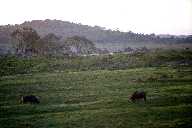
|
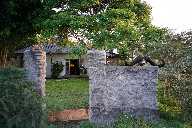
|
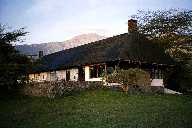
|
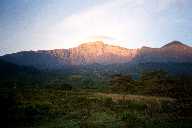
|
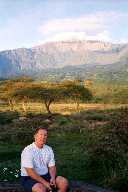
Kilimanjaro in the background |
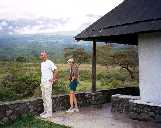
|
More
|
|
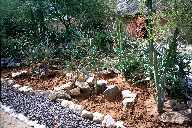
|
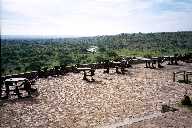
|
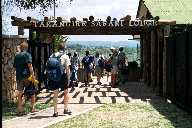
|
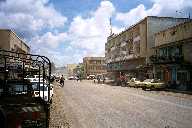
The town of Arusha. |
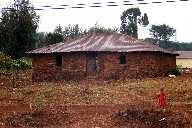
Typical low-income housing. |
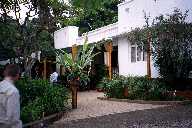
A nice restaurant in Arusha, run by an Italian guy. |
Our favorite bottled drinking water... you had to be careful about what you drank, otherwise you might get "Kilimanjaro's Revenge". |
| Ok... so this was a slight diversion from our trip to Africa. On the way over, since we had to fly through Amsterdam, the flight was arranged so we had one full day and night there. We did a whirlwind tour, with a canal boat, a couple of museums (including the Van Gogh), and, of course, a trip to the red light district in the evening... talk about your window shopping... sorry, no photos though. Very likely your camera would be tossed in the nearest canal if you tried to take photos of the girls. |

A car that's Kathy's size! |
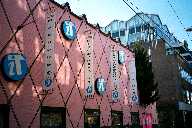
I think I'll find someplace else to go on a Saturday night. Interesting sponsorship concept for Smirnoff. |
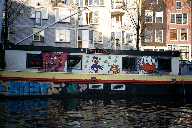
A floating version of Amsterdam's notorious "coffeehouses", hash bars in reality. |
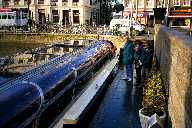
Canal tour boat |
More Amsterdam
|